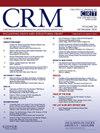Predictors of in-hospital early mortality following valve-in-valve transcatheter aortic valve replacement
IF 1.9
Q3 CARDIAC & CARDIOVASCULAR SYSTEMS
引用次数: 0
Abstract
Background
There is an increasing preference of utilizing valve-in-valve transcatheter aortic valve replacement (ViV TAVR) after bioprosthetic valve failure. However, updated large-scale analysis investigating early-mortality after the patients underwent ViV TAVR is limited.
Objective
This study aimed to assess in-hospital early mortality and analyze the factors associated with in-hospital early mortality among patients who underwent ViV TAVR.
Methods
Using the all-payer, nationally representative National Readmission Database, our study included patients aged 18 years or older who had ViV TAVR between 2017 and 2020. We categorized the cohort into two groups depending on the occurrence of in-hospital early mortality (death within 30 days after the procedure). Based on the ICD-10, we identified the trend of in-hospital early mortality after ViV TAVR and further analyzed the significant factors associated with it.
Results
After adjustment, a total of 11,009 patients who had ViV TAVR were included in this study. 329 (3.0 %) had in-hospital early mortality and 10,680 (97.0 %) without. There was a decreasing trend in in-hospital early mortality from 3.3 % in 2017 to 1.0 % in 2020, but it was insignificant (p = 0.71). In multivariable analysis, the independent factors associated with in-hospital early mortality were chronic liver disease (adjusted odds ratio [aOR]: 3.62; 95 % confidence interval [CI]: 1.96–6.71, p < 0.01), coagulation disorder (aOR: 1.77; CI: 1.16–2.68, p < 0.01) and pulmonary hypertension (aOR: 1.78; CI: 1.18–2.68, p < 0.01). Among patients who died during early readmission following ViV TAVR, the most common cardiac cause and non-cardiac cause of readmission were heart failure (15.4 %) and infection (23.1 %), respectively.
Conclusion
The in-hospital early mortality following ViV TAVR was low at 3.0 %. The independent factors associated with in-hospital early mortality post-procedurally were chronic liver disease, coagulation disorder, and pulmonary hypertension.
经导管主动脉瓣置换术后早期住院死亡率的预测因素。
背景:在生物瓣膜失效后,越来越多的人倾向于使用经导管瓣内主动脉瓣置换术(ViV TAVR)。然而,关于患者接受ViV TAVR后早期死亡率的最新大规模分析是有限的。目的:本研究旨在评估ViV TAVR患者的住院早期死亡率,并分析与住院早期死亡率相关的因素。方法:使用全付费、具有全国代表性的国家再入院数据库,我们的研究纳入了2017年至2020年期间发生ViV TAVR的18岁及以上患者。我们根据住院早期死亡(手术后30天内死亡)的发生率将队列分为两组。基于ICD-10,我们确定了ViV TAVR术后住院早期死亡的趋势,并进一步分析了与之相关的显著因素。结果:调整后,本研究共纳入11009例ViV TAVR患者。329例(3.0%)有院内早期死亡,10680例(97.0%)无院内早期死亡。住院早期死亡率从2017年的3.3%下降到2020年的1.0%,但下降趋势不显著(p = 0.71)。在多变量分析中,与院内早期死亡相关的独立因素为慢性肝病(校正优势比[aOR]: 3.62;95%可信区间[CI]: 1.96 ~ 6.71, p结论:ViV TAVR术后住院早期死亡率较低,为3.0%。与术后住院早期死亡相关的独立因素是慢性肝病、凝血功能障碍和肺动脉高压。
本文章由计算机程序翻译,如有差异,请以英文原文为准。
求助全文
约1分钟内获得全文
求助全文
来源期刊

Cardiovascular Revascularization Medicine
CARDIAC & CARDIOVASCULAR SYSTEMS-
CiteScore
3.30
自引率
5.90%
发文量
687
审稿时长
36 days
期刊介绍:
Cardiovascular Revascularization Medicine (CRM) is an international and multidisciplinary journal that publishes original laboratory and clinical investigations related to revascularization therapies in cardiovascular medicine. Cardiovascular Revascularization Medicine publishes articles related to preclinical work and molecular interventions, including angiogenesis, cell therapy, pharmacological interventions, restenosis management, and prevention, including experiments conducted in human subjects, in laboratory animals, and in vitro. Specific areas of interest include percutaneous angioplasty in coronary and peripheral arteries, intervention in structural heart disease, cardiovascular surgery, etc.
 求助内容:
求助内容: 应助结果提醒方式:
应助结果提醒方式:


